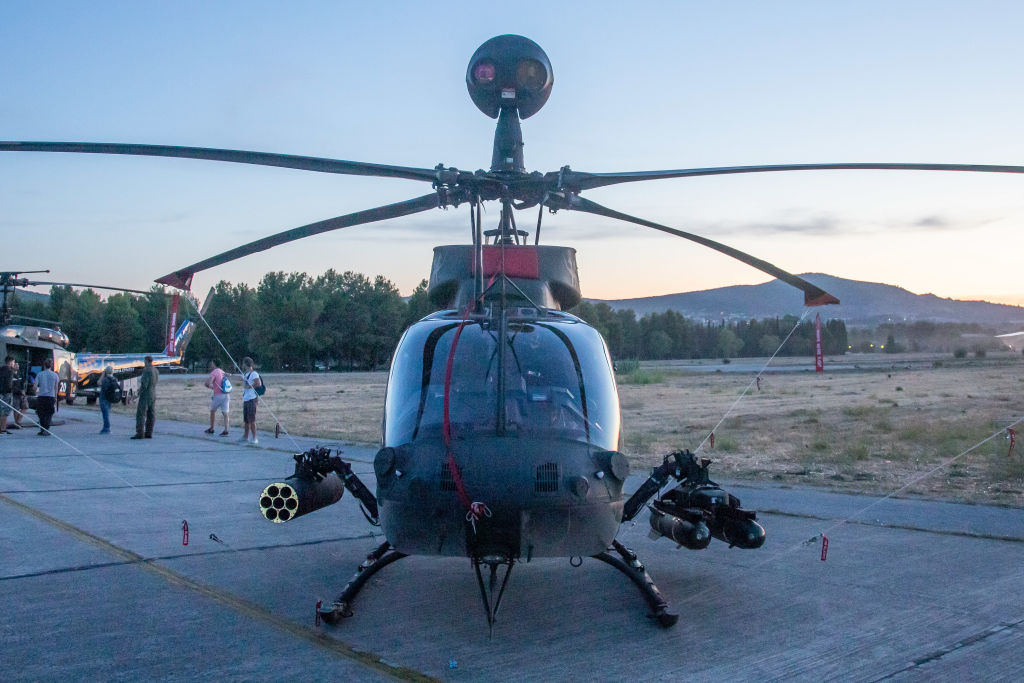Once touted as priority #1 in the family of vertical lift aircraft, this helicopter won’t fly.
The US Army, often complaining about being on the short end of the funding stick, just canceled one of its cutting-edge programs after spending $2 billion. The Future Attack Reconnaissance Aircraft (FARA) was to have been a crucial part of a new family of vertical lift aircraft. After twenty years of fits and starts finding a replacement for an armed helicopter for the forward scouting mission, FARA was to be that program. Now, out of the blue, the Army says, “not so much.”
Concern Over Funding for the Army

Historically, the Army has sacrificed end strength number of personnel in favor of modernizing the force. Furthermore, Defense Department cost analysts have warned of a dangerously low funding level for the Army. “Cutting the Army to its lowest funded level since before World War II with no decrease in demand is not sustainable…Instead, Congress should direct a plan for how DoD intends to restore Army forces to the levels required to execute the NDS [National Defense Strategy],” wrote the Secretary of Defense’s former acting director of Cost Assessment and Program Evaluation John E. Whitley in a special report. “Underfunding the Army Has Risky Implications.” So, how does the Army acquisition team, suddenly, decide to cancel a major program?
Jen Judson, writing for Defense News, gives us some insight into how this happened:
“The helicopter program arrived in 2018 with lofty expectations. Army leaders hoped it would serve as a model for new acquisition approaches for its most complex and most expensive weapon systems. Prototypes from Bell Textron and Lockheed Martin’s Sikorsky were expected to fly later this year. But Thursday [February 8], the Army’s top acquisition officials [Doug Bush, Assistant Secretary of the Army for Acquisition, Logistics, and Technology (ATL)] described a new vision and major aviation overhaul.”
Ah, that explains it – “a new vision.” But how long before the new vision becomes the old vision, and the American taxpayer is out another $2 billion with nothing to show for it? Sadly, no one should be surprised. The US Army has developed an acquisition culture of canceling expensive weapons programs because of mismanagement, poor understanding of warfighter requirements, and cost control failures.
The Army’s crown jewel Cold War-era Crusader self-propelled artillery program was canceled by then Secretary of Defense Don Rumsfeld in 2002; the Comanche, an armed scout helicopter with stealth characteristics, was canceled by the Army in 2004 after building two prototypes at the estimated cost of $9 billion; and the Future Combat System all but canceled and restructured in 2009 are among the more infamous Army acquisition failures. Colonel William M. Robare, in his 2011 US Army War College titled “Army’s Failed Programs: Moral Imperative for Change,” estimated that “these programs collectively invested over $30 billion without delivering their promised capabilities.”
With little or no warning in 2006, the Army announced it was canceling what it called Aerial Common Sensor (ACS). The ACS was a joint service program for the Army and the US Navy to provide battlefield and sea-borne electronic signals intelligence. After hundreds of millions of dollars, the Army terminated the program because it needed a firmer “understanding of what the requirements are,” according to a 2006 BattleSpace article. Claiming not to understand what the warfighter needs raises the obvious question. Why didn’t the Army better understand the requirements before starting the ACS program, rather than wasting taxpayer dollars?
Another Armed Reconnaissance Helicopter Deep-Sixed
In addition to these programs, the Army spent hundreds of millions on another reconnaissance helicopter that never saw operational service. “Fed up with schedule delays and soaring costs, the Defense Department late Thursday [October 16, 2008] axed the Army’s Armed Reconnaissance Helicopter (ARH) program that was to provide a replacement for the services aging OH-58D Kiowa Warrior,” Greg Grant reported for Military.com in 2008. Grant explained: “The ARH was originally projected to cost $8.56 million per aircraft with delivery to begin next year. DOD now estimates the helicopter will cost $14.48 million per copy, and the initial delivery date [2006] had slipped to 2013.”

Bell OH-58D Kiowa Warrior Helicopter (Photo by Nicolas Economou/NurPhoto via Getty Images)
The walk down the US Army’s memory lane is not to pick on one military department. There are examples from the other services just as emblematic of acquisition system failures. The FARA cancelation is troubling because the US still does not have a follow-on armed reconnaissance helicopter. And the reasoning behind the cancellation is that, well, the Army changed its mind. However, the more fundamental problem remains. The US Army can’t define warfighting requirements.
“The service will no longer rely on a manned helicopter to execute the majority of armed scout missions and will instead look to unmanned aircraft and sensors to conduct those missions,” Judson wrote. The rationale was that “Army Chief of Staff Randy George said the service was influenced by the battlefield in Ukraine. It has seen there ‘that aerial reconnaissance has fundamentally changed.”
Did the Army not get the memo? America’s biggest threat is China in the Indo-Pacific, not Russia in Ukraine. Additionally, the Army doesn’t have any “unmanned aircraft and sensors” that are armed. The result is that the armed reconnaissance mission requirement will continue to go unmet while the Army works out its new vision. Meanwhile, cha-ching, cha-ching – that’s the sound of taxpayer dollars paying the new vision bill.
The views expressed are those of the author and not of any other affiliation.

